Medal Louis XIV Splendor Rei Navalis Mauger The Royal Navy French Medal
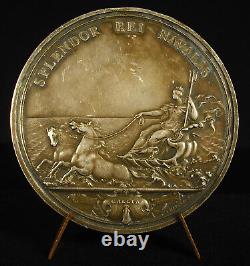
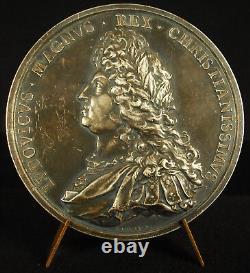
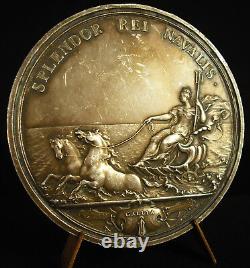
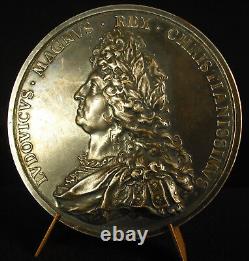
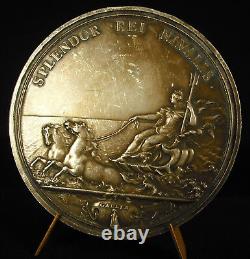

Silvered bronze medal from the Paris Mint (cornucopia hallmark from 1880). Medal struck around 1900, re-strike of a model by F Mauger around 1700.
Note some friction, small shocks, as well as a lack of silver cover on the edge Beautiful patina. Louis XIV, Homage to the Navy. Laureate, draped and armored bust on the left. France seated, holding a trident, in a chariot going left on the waves. Engraver / Artist : F Mauger.
Hallmark on the edge (mark on the edge) : cornucopia + bronze. The support is not for sale. __ This period, which goes from the beginning of the 17th century to 1715, is very important because it was during these decades that the French navy became a permanent force whereas until then, the royal authority was content to occasionally arm fleets for war. This creation is the work of Richelieu. It's a difficult birth because the efforts are not regular. This young navy declined after the death of the cardinal before being reborn under Louis XIV thanks to the will of the principal minister at the start of the reign: Colbert. To support its squadrons, the royal authority developed a real industrial tool which ranged from the military shipyard to the foundries of cannons and anchors, to the manufacture of sails, ropes and other equipment, not to mention the contribution of almost all the forests of the kingdom to provide construction wood. A naval administration is set up to manage the arsenals, ensure supplies, register the sailors, while schools are created to train officers.The ports are profoundly transformed, such as Brest and Toulon, but also Marseille, Le Havre, Dunkirk, Lorient, Cherbourg. A port-arsenal was even created from scratch: Rochefort. This desire to assert itself at sea comes at a time when France, the most populous country in Europe at that time, is fundamentally defined by its agricultural wealth. Public opinion is, in its.
This period, which goes from the beginning of the 17th century to 1715, is very important because it was during these decades that the French navy became a permanent force whereas until then, the royal authority was content to occasionally arm fleets for war. To support its squadrons, the royal authority developed a real industrial tool which ranged from the military shipyard to the foundries of cannons and anchors, to the manufacture of sails, ropes and other equipment, not to me.

